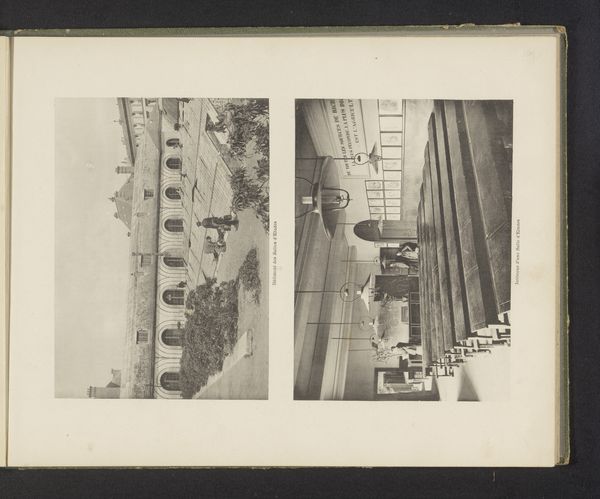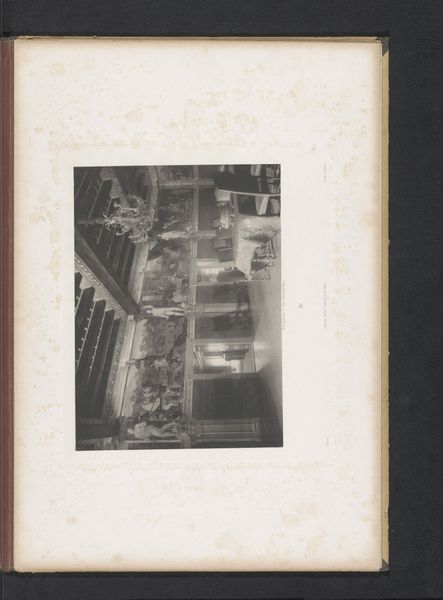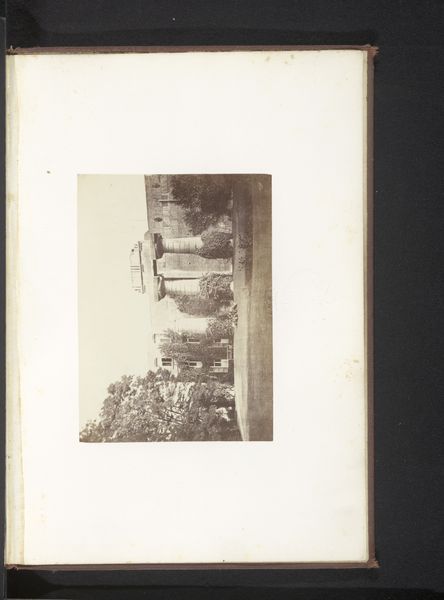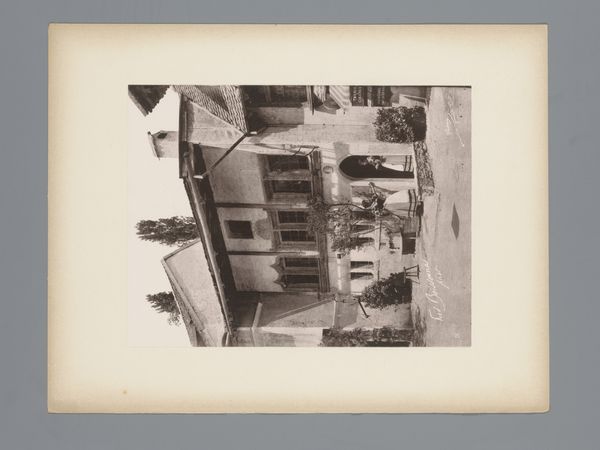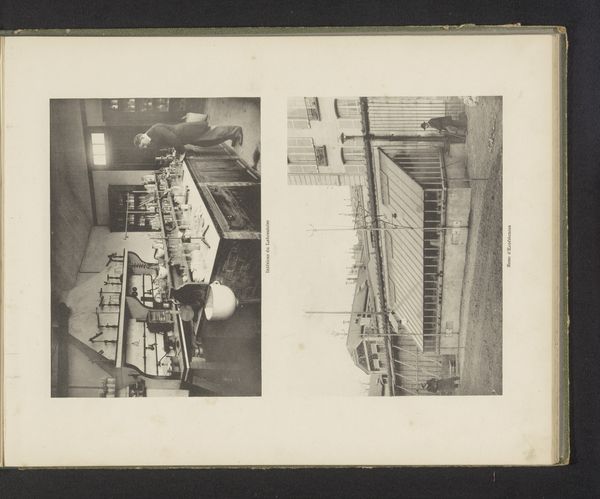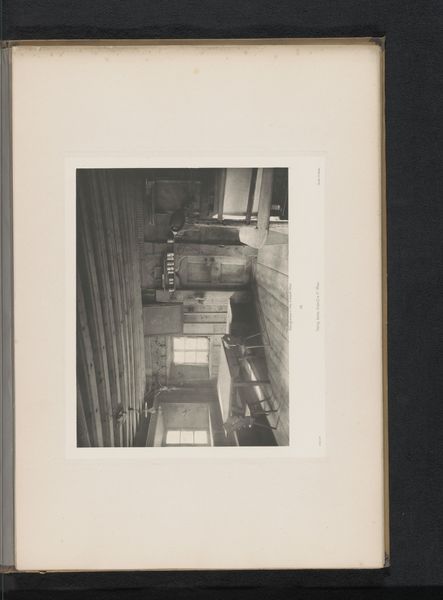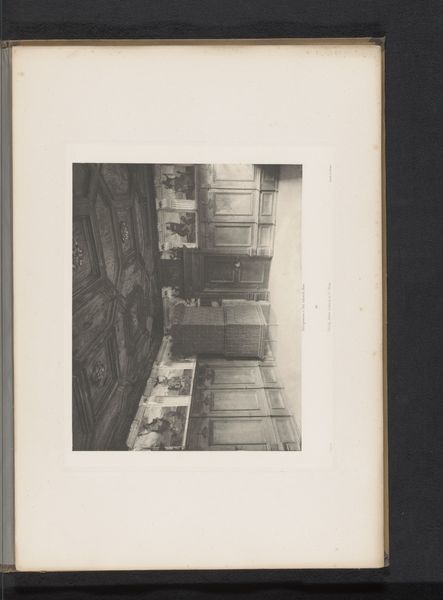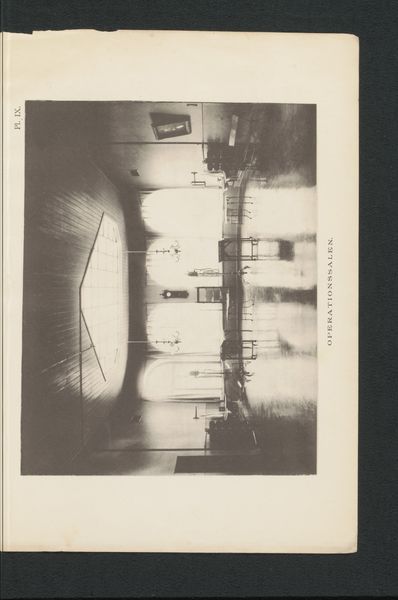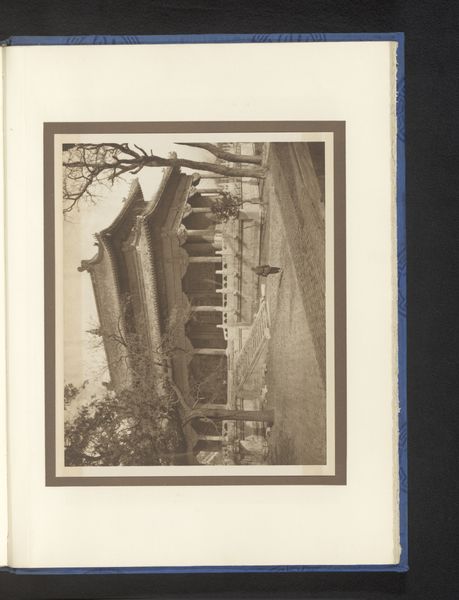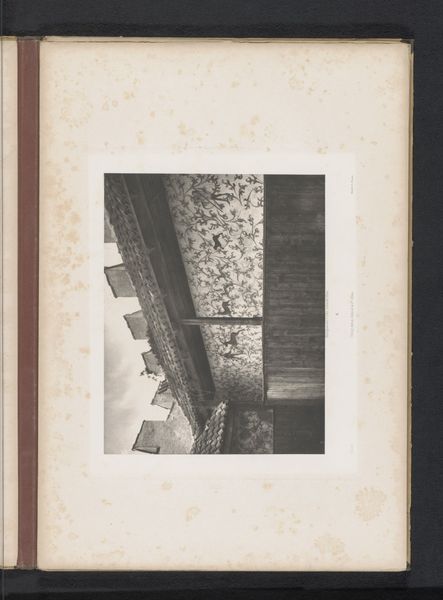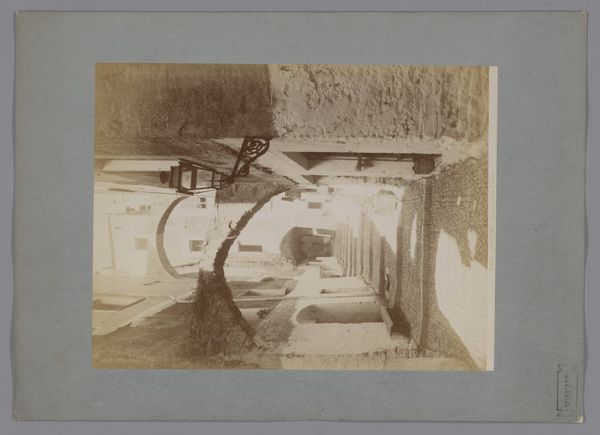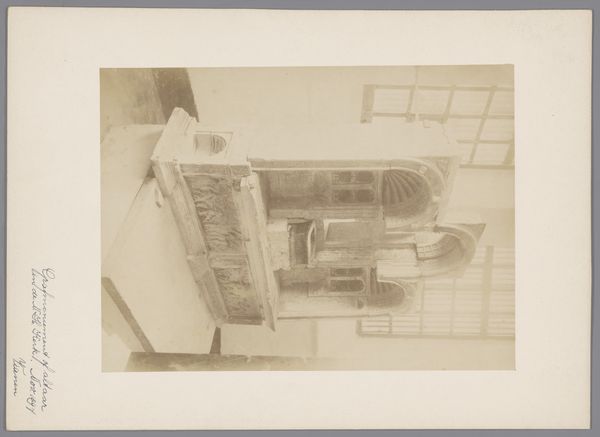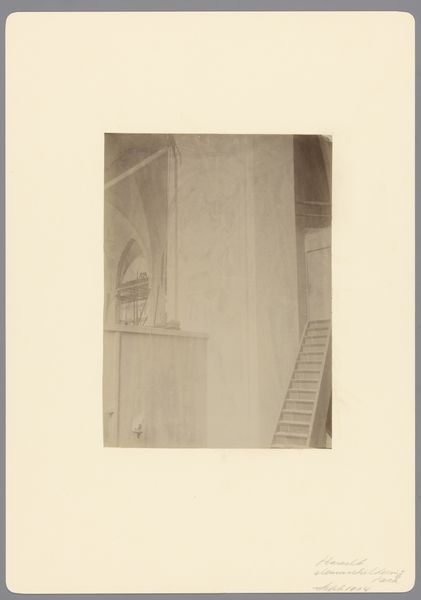
print, photography
# print
#
landscape
#
photography
#
geometric
#
italian-renaissance
Dimensions: height 287 mm, width 380 mm
Copyright: Rijks Museum: Open Domain
Curator: This image, a landscape print, comes from Alfredo Noack and it's called "Kloostergang van de Certosa di Pavia," predating 1882. It captures a cloister of the Certosa di Pavia, rendered through the emerging medium of photography during that period. Editor: What strikes me first is the intense repetition of the arches, creating a strong sense of perspective and depth. The sepia tone adds a layer of antiquity and almost ethereal calmness, though the angles feel a bit jarring at first. Curator: Exactly, Alfredo Noack positioned his lens to emphasize the geometric elements inherent to the Italian Renaissance style that influenced the cloister’s architecture. You can observe how the receding arches create this feeling of endlessness and draw us toward a vanishing point, something many architectural spaces throughout the Renaissance strived to attain, reflective of mathematical harmony but also the promise of both secular and religious utopian ideals. Editor: I am drawn to the rhythm established by the sequence of pillars, and the tonal variations create gradients on the ceiling. Didactic spaces for monastic contemplation and prayer rarely feel so dramatic in person; there’s something of Piranesi in its romantic, ruinous perspective. Curator: Thinking about Noack’s artistic intent, it's vital to realize how the circulation of images, particularly photographs of Italian monuments and buildings, contributed to shaping both national and transnational identities. This cloister transcends merely the walls, but a stage where performative rituals of religion and community happen. Photography allowed it to participate within political conversations. The image freezes in place and memorializes cultural heritage. Editor: True, photography plays this double role—objective documentarian but also active participant in aesthetic experience and the framing of culture. The shadows evoke emotion too, which makes me ponder the light. The soft light washes the composition while selectively revealing and concealing portions. There’s an element of selective disclosure within the image-making process itself. Curator: Consider the positionality of both viewer and viewed here, also. Tourists often have a romanticized notion of older churches and buildings being abandoned to the weather elements and the environment. It allows us to both meditate on place and the relationship we build through travel and documentation. This intersectionality helps frame broader dialogues surrounding authenticity, commodification, and cultural representation. Editor: Looking at the tonality and its interplay within the arcadian patterns, it strikes me that the artwork almost transcends the function of mere documentation. I was happy to meditate here with you. Curator: I feel similarly. Looking at it, one gets to ponder our modern engagement with memory, preservation, and identity, which has become newly informed and nuanced after revisiting it here.
Comments
No comments
Be the first to comment and join the conversation on the ultimate creative platform.
